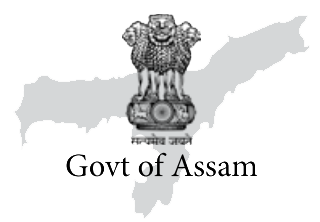Chief Minister Dr. Himanta Biswa Sarma has laid down a chart for transforming the way district administration across the State shall function in future. In sync with his mission of making districts the fulcrum of a developed Assam, Dr. Sarma, in his speech at the DC conference in Tinsukia recently, called for a massive transformation and change in mindset to achieve set targets.
He said that the District Commissioners (new name for DCs) shall function as chief secretary of the district and focus on key development parameters. “All work related to the district will now be communicated to them directly by line ministries while guardian ministers will function as chief minister of the district,” he said in his speech.
Welcoming the idea, a participant in the conference, on condition of anonymity, said that greater delegation of powers to DCs, and greater decentralisation of routine functions to offices below, will strengthen public service delivery.
Dr Sarma said that all DCs will now be assisted by three ADCs — Revenue, Infrastructure and Social Welfare, while each constituency in the district will be linked to a single revenue circle.
A DC of a district told Asom Barta, “With the delegation of routine work to the ADCs at the constituency, District Commissioners shall be able to focus on fructifying the potential of the district and have time to think big for the district.”
The Chief Minister said that the DCs will henceforth monitor district level GDP and progress of flagship schemes.
“The Government’s decision to consider districts as an independent economic unit and to decentralise and delegate the administrative powers for achieving them shall accelerate growth and make administration accessible in the district,” a participant told this newsletter.
The Chief Minister said that his priority is to bring uniform development in all districts. “Once we make an assessment, I want DCs from less performing ones to visit their high performing counterparts to assess the reasons for their underachievement and take course correction,” he outlined in his speech, while stating that Additional Chief Secretaries shall work with the DCs for the first six months to achieve the desired objective.
The conference mooted the idea of developing Legislative Assembly Constituency (LAC)-wise administrative delivery mechanism on the premise that many departments do not have coterminous field units which often results in a lack of coordinated development, more so for the people in getting their services delivered. Many DCs and senior bureaucrats, present in the discussion, felt that once in practice, this will be of relief for the citizens as well as the administration for having greater clarity on jurisdiction of various offices.
“One of the advantages that come from the idea of LAC-level delegation is it improves coordination between the political and administration units while promoting competition not just among districts but also among LACs resulting in increased involvement of public representatives in the growth of their own constituencies,” a District Commissioner told this reporter. He said that previously there was an overlap of multiple departments like revenue circles, development blocks, health blocks, agriculture circles, etc., in the same LAC which would not only lead to confusion but also create difficulty in monitoring progress and generating reports.
However, a couple of DCs believed the changes will be successful only if the institution of DCs is strengthened substantially with the power to monitor and coordinate the departments without loss of authority. “Giving more powers through the above reforms will act as a catalyst towards development,” a DC said requesting anonymity.
“If a strong political will is there to strengthen the district administration and promote competition among the LACs then this will be not only a reformative step but a revolutionary idea in public administration,” a bureaucrat confided in this reporter.
The Chief Minister also chaired a two-day review meeting of all the Deputy Commissioners and ADCs in charge of important subdivisions in the State. Such was the intensity of the discussions that on both the days they continued into the night.
A review of various schemes was also undertaken during the three-day conference. “It was interesting & inspiring to see that across sectors, indicators almost all districts have either surpassed their targets or are very close to achieving it. It was wonderfu to note that scheme after scheme, sector after sector Assam is breaking into the category of the Top 10 States, while in a few, being among the Top 3 even,” said an officer.














